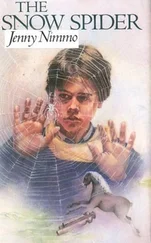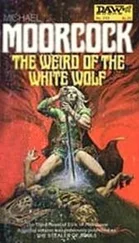Heinrich Harrer
The White Spider
THE STORY OF
THE NORTH FACE OF THE EIGER
Translated from the German by
HUGH MERRICK
With additional chapters by
HEINRICH HARRER AND KURT MAIX
With an Introduction by
JOE SIMPSON
 Copyright
Copyright
William Collins
An imprint of HarperCollins Publishers Ltd. 1 London Bridge Street London SE1 9GF
www.harpercollins.co.uk
This edition published by Harper Perennial 2005
Previously published in paperback by Flamingo 1995
Previously published in paperback by Paladin 1989
First published in Great Britain by Rupert Hart-Davis Ltd 1959
Revised edition 1965
Second revised edition published by Granada Publishing 1976
Copyright © Heinrich Harrer 1958, 1964
This translation copyright © Rupert Hart-Davis Ltd 1959
Introduction copyright © Joe Simpson 2005
PS section copyright © Miranda Haines 2005
PS™ is a trademark of HarperCollins Publishers Ltd.
Heinrich Harrer asserts the moral right to be identified as the author of this work
A catalogue record for this book is available from the British Library
All rights reserved under International and Pan-American Copyright Conventions. By payment of the required fees, you have been granted the nonexclusive, nontransferable right to access and read the text of this ebook on-screen. No part of this text may be reproduced, transmitted, downloaded, decompiled, reverse-engineered, or stored in or introduced into any information storage and retrieval system, in any form or by any means, whether electronic or mechanical, now known or hereinafter invented, without the express written permission of HarperCollins ebooks
HarperCollins Publishers has made every reasonable effort to ensure that any picture content and written in this ebook has been included or removed in accordance with the contractual and technological constraints in operation at the time of publication
Source ISBN: 9780007197842
Ebook Edition © SEPTEMBER 2010 ISBN: 9780007347575
Version: 2017-04-27
Title page
Copyright
Introduction
Map
“Come back safe, my friends”
The “White Spider”
The First Attempt on the North Face
The Tragedy of Toni Kurz
1937 on the Eiger
The First Ascent of the Face
Further Successful Ascents
1952: The Great Year on the Eiger
The Wall of Life and Death
The Tragedy of 1957
The International Rescue Team
Epilogue
Fate made the Amendments
Four Shirts and an Overcoat
Ascendancy of the Armchair
The Silver Trench
Climbers have a Language of their own
“I am sorry, Brian …”
July 31st: Start and Finish
The Mass Assault
The Year of Chivalry
Man, the Deciding Factor
Route Guide to the North Face
Attempts and Successes on the North Face
Keep Reading
Index
About the Author
P. S. Ideas, interviews & features …
About the author
Heinrich Harrer: An Extraordinary Life
Life at a Glance
Harrer’s Top Tips to Modern Explorers
Read on
If You Loved This, You Might Like …
Have You Read?
Find Out More
Also by the Author
About the Publisher
The North Face of the Eiger has always held a lingering fascination for me from the moment I finished reading Heinrich Harrer’s The White Spider at the age of fourteen. This gripping account of the first ascent in 1938 and the subsequent and often disastrous attempts that followed should really have put me off mountaineering for life. Only a week earlier I had been taken rock climbing on a small limestone crag on the edge of the North York Moors. I was unaware that the arcane world of extreme mountaineering even existed, let alone considered devoting the rest of my life to it. When I closed the book, my head was filled with grim black-and-white images of men fighting for survival in a ferociously steep and unrelentingly dangerous landscape. I could not imagine any more frightening way to die. Avalanches, rock falls crashing past like gun shots, lightning blasting through storm-lashed days, men pinned down unable to escape, dying slowly before the horrified gaze of tourist onlookers in the valley below - why would anyone want to place themselves in such a nightmarish situation? I had no idea, so I read the book again.
I was no better informed at the end of the second reading, but I knew one thing: I wanted to find out. Despite the terrible hardship and awful deaths, I was forcibly struck by the fact that these men had chosen to be there. They couldn’t all be idiots. There must be something very special about mountaineering for these people to think that such risks are worth it. I became a mountaineer inspired by the most gripping and frightening mountaineering book I have ever read.
Eleven years later, much to my chagrin, I found myself hanging helplessly from a rope, battered by avalanches and storm winds, badly injured, and about to plunge into a nightmare every bit as bad as those described in The White Spider. Today, thirty years after reading Harrer’s book, I am astounded by the number of young people who tell me that my account of this survival epic in Peru, Touching the Void, inspired them to take up climbing. It is some consolation to know that my rather odd decision-making processes as a fourteen-year-old are being replicated today.
In many ways The White Spider is an unlikely success. The language can seem archaic and incongruous today. The grainy black-and-white photographs seem old-fashioned compared to the sumptuous photography in modern mountaineering literature. Today, standards of climbing have far outstripped anything that would be found on the 1938 route. It should really be a relic of mountaineering history accessible only to the most avid of climbing aficionados. And yet it is these very criticisms that make it such a fascinating and seminal book.
It is not solely about mountaineering. It is about humanity, courage, strength in adversity, and the power of the mind. It is impossible to read this book without being awed by the single-minded determination of a small band of poorly equipped climbers struggling to survive in a world that few of us can imagine. It is also impossible not to ask why they chose to do such a thing. Unfortunately the only way to understand the answer to that question is by going and doing it yourself. A climber would never ask such a question, and a non-climber would never understand the answer.
When I read of Toni Kurz enduring such a terrible, drawn-out death, hanging alone on a rope, his companions dead around him, his rescuers tantalizingly out of reach, I was horrified and fascinated in equal measure. This, I was later to discover, is the essence of mountaineering: that strange mixture of fear and excitement, the addiction of apprehension and anticipation without which mountaineering would simply be another sport. It is far, far more than sport. It is not done to win a game, to gain a gold medal, to beat a fellow competitor. It is a nonsensical game of life, and it is this absurd pointlessness that makes it so addictive. If death were not ever present many would not be drawn to it. Death, in a paradoxical way, validates the life-affirming nature of the game played. It becomes, in the end, a lifestyle rather than a sport; a game of risk in which what you stand to lose far outweighs whatever you could possibly win. After many years I finally understood what Toni Kurz thought was worth dying for, and yet I could never describe it properly to others. That in itself was reason enough to do it.
Читать дальше

 Copyright
Copyright










